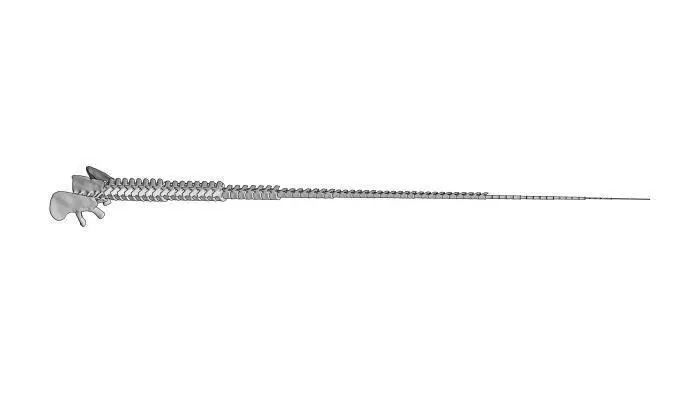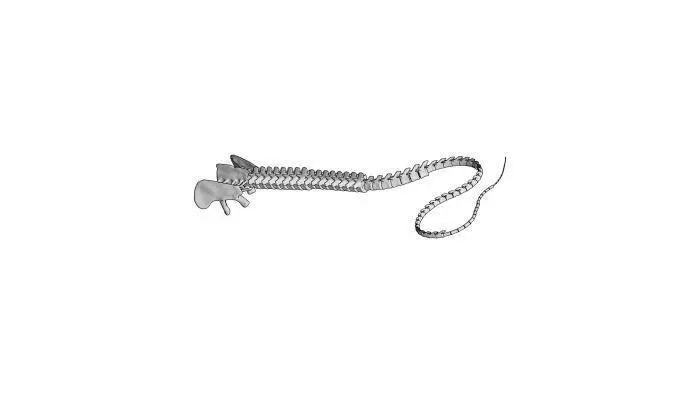
Dinosaurs can swing their tails up to 33 meters per second

The starting position of simulated acceleration at the tail of the model in this study (image from Simone Conti). Springer Nature
A new paleontological modeling study published in Scientific Reports, an open-access academic journal owned by Springer Nature, suggests that Diplodocus ( Diplodocus), a plant-eating dinosaur with a long neck and tail, may have been able to move its tail and use it as a thick whip at speeds of up to 33 meters per second (over 100 kilometers per hour). The finding contradicts a past study that proposed a hypothetical structure at the tail end of dipterosaurs, similar to a whiptail hair cluster, that could travel faster than the speed of sound (340 meters per second) and cause a mini-sonic boom.
Corresponding author Simone Conti of the University of New Lisbon in Portugal and the Polytechnic University of Milan in Italy, along with colleagues and collaborators, simulated the tail movement of Diplodocus using a model based on five fossil diplodocus specimens. The tail of the model, which is more than 12 meters long and weighs 1,445 kilograms, is made up of 82 cylinders representing vertebrae attached to the base of an immovable hip bone. When the base of the tail moves in an arc, it produces a whipping motion that can reach a maximum speed of 33 meters per second – more than 10 times slower than the speed of sound in standard air, unable to produce a supersonic boom.

The authors also tested whether the dinosaur’s model tail could withstand the pressure of high enough speeds to create a sonic boom. They found that the thin whip-like tail could not survive a maximum speed of 340 meters per second without breaking. They then tested three hypothetical metre-long structures (mimicking the structural ends of a thick whip), including three segments of skin and keratin, a flail of woven keratin filaments and soft tissue, added to the end of the model’s tail to see if it could move at the speed of sound without breaking. It turned out that no structure could withstand the pressure at 340 meters per second without breaking the tail.
Together, the modeling findings suggest that the Diplodocus tail may not have been fast enough to create a small sonic boom, the paper’s authors say. They speculate, however, that the Diplodocus could still have moved its tail quickly as a defensive weapon or to fight with other Diplodocus.






